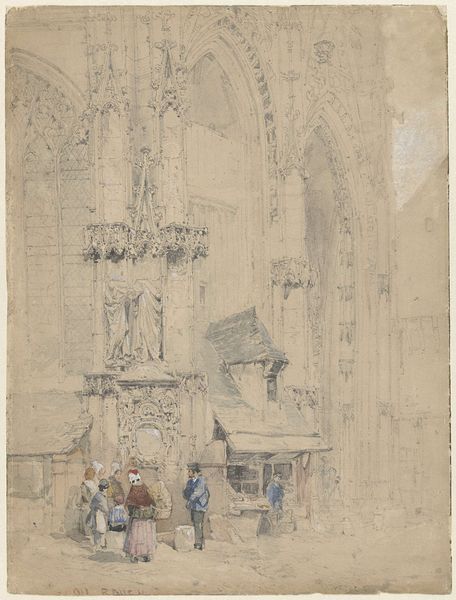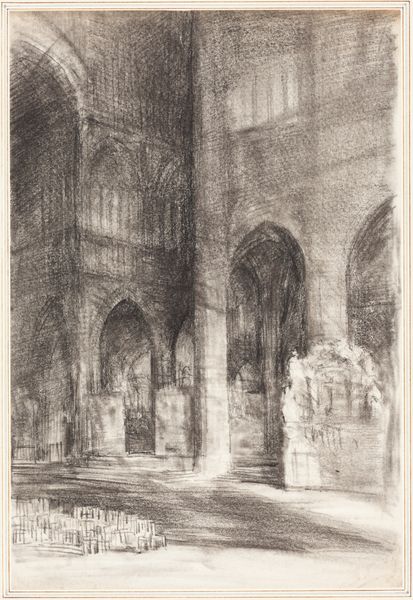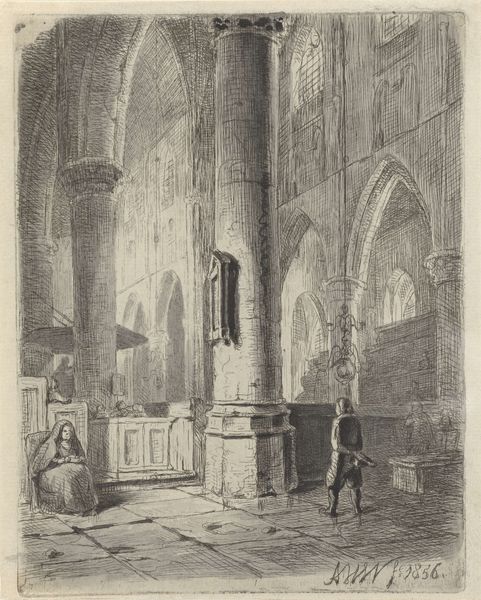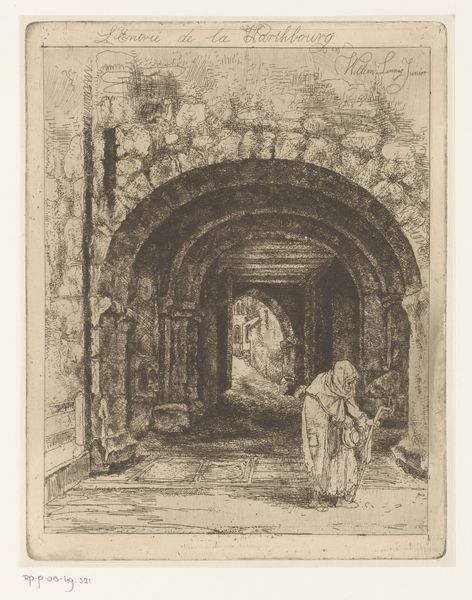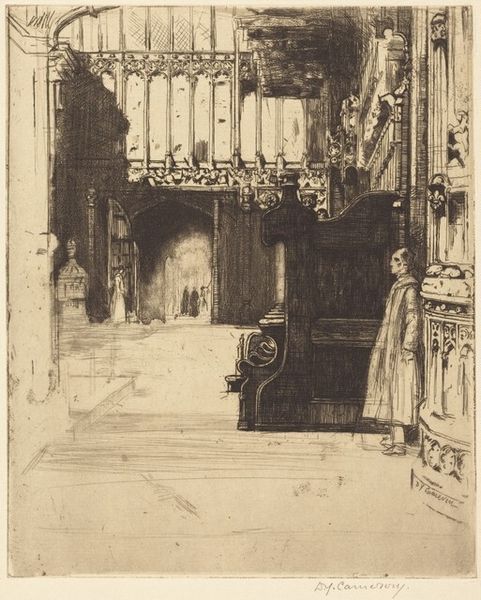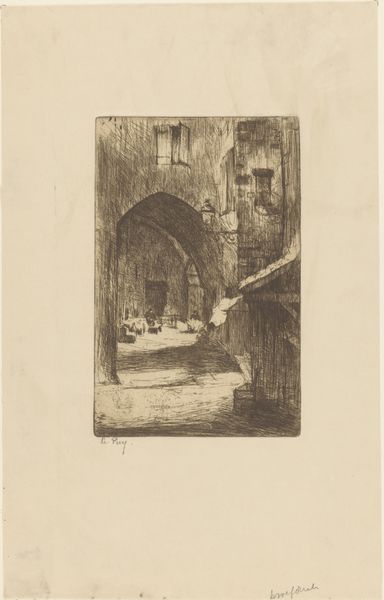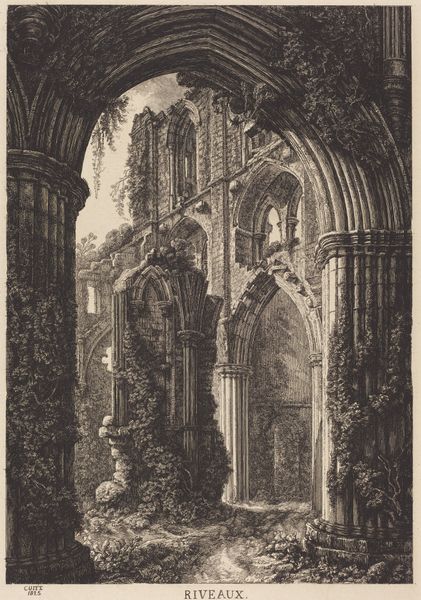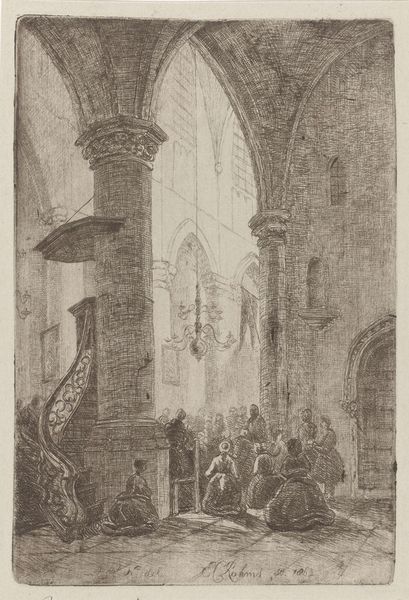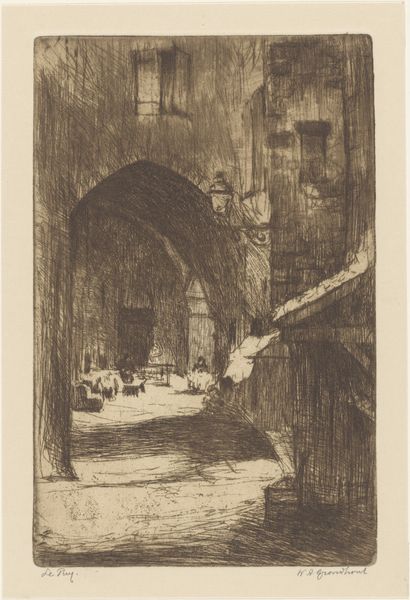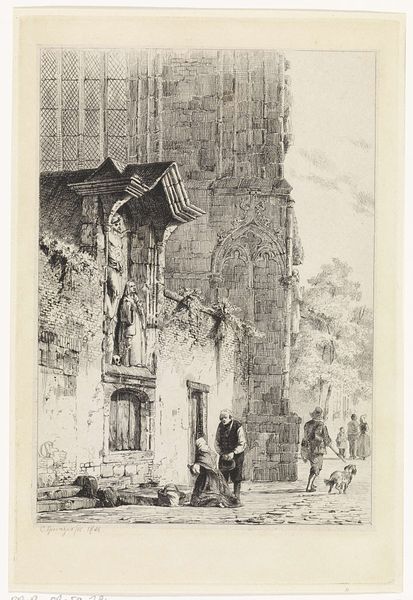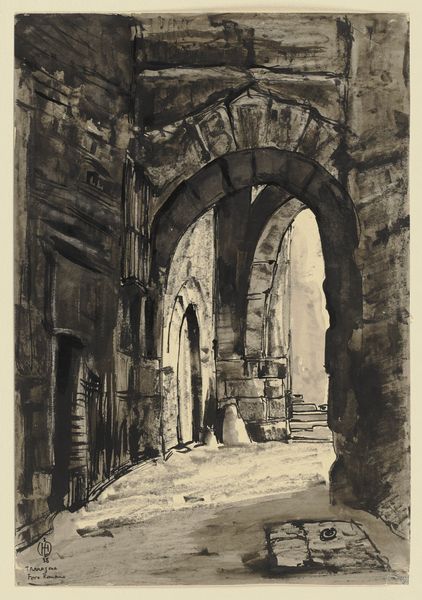
drawing, print, etching, engraving
#
drawing
# print
#
etching
#
cityscape
#
engraving
#
realism
Dimensions: plate: 30.48 × 18.42 cm (12 × 7 1/4 in.)
Copyright: National Gallery of Art: CC0 1.0
Editor: Here we have Hedley Fitton's 1909 etching, "Saint Bartholomew the Great, Smithfield." The density of the lines really pulls me in, making the church seem imposing, yet also subtly obscured by the city bustling around it. What historical context shapes your interpretation of this image? Curator: This etching beautifully illustrates the evolving role of religious institutions within the urban landscape. Notice how Fitton juxtaposes the grandeur of Saint Bartholomew's, founded in 1123, with the mundane activities on the street. The inscription detailing the burning of martyrs adds another layer of complexity. What statement might Fitton be making about the public role of faith amidst modernization? Editor: Perhaps it’s a tension between remembering a brutal past and forging a more tolerant present. It seems like a pretty blunt condemnation of institutional cruelty being contrasted with everyday activities like this guy fixing his wagon. Curator: Exactly. And how do you think the choice of etching as a medium influences our understanding? Etchings, especially in this era, allowed for mass reproduction and dissemination of images, effectively placing art within the reach of the public and informing how religious architecture was seen. Is it reverence or objective observation that Fitton conveys through the precise lines? Editor: It strikes me as observation, but tinged with respect, if that makes sense. He doesn't seem to shy away from depicting the church alongside the dirt and grit of the city. Curator: A perceptive reading. The artwork serves as a potent reminder of the layered narratives embedded within our built environment and its continued evolution as a public space. Consider how today’s cities blend tradition with modernity – how this historical rendering influences our perception of that dynamic. Editor: I never thought about how the medium itself could comment on art's role in society. Thank you! Curator: Likewise, you’ve drawn out the nuanced interaction between past violence and contemporary life. It's always valuable to consider how public art participates in the civic dialogue of its time.
Comments
No comments
Be the first to comment and join the conversation on the ultimate creative platform.
